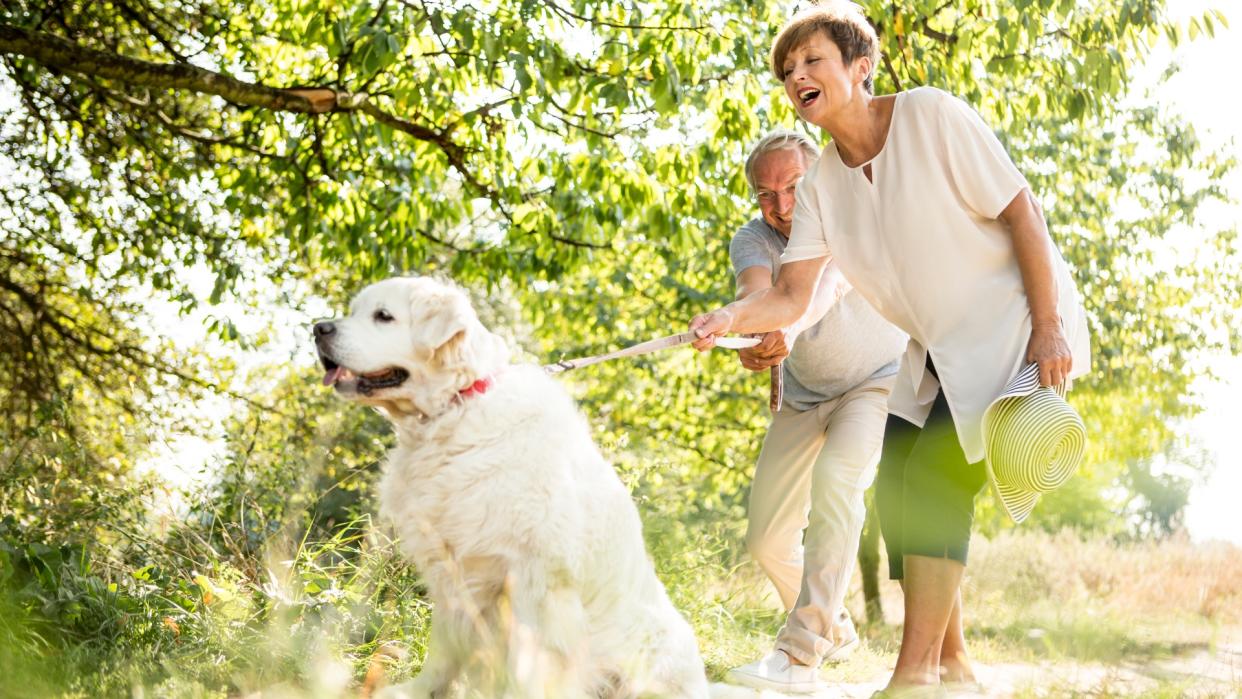Trainer shares seven of her favorite loose leash walking tips so you can stride it out with zero stress

If there's one thing that almost all dogs and their owners struggle with, it's loose leash walking.
Accidentally slipping into the trap of the most common loose leash walking mistakes can quickly derail your pup's progress in this area, so steering clear of these and setting your dog up for success is key.
With that in mind, Christie Catan, the co-founder of Tails of Connection and a qualified dog trainer, has shared a video to Instagram in which she's spilling the beans and sharing all of her favorite loose leash walking tips.
Read on to find out what they are...
A post shared by Tails of Connection | Dog Training Community (@tailsofconnection)
A photo posted by on
1. Use a longer leash: When it comes to how to stop a dog pulling on a leash, length is everything. "The length gives your dog more space to move & makes it less likely that pulling is how they access natural reinforcers like smells," explains Catan.
2. Capture attention: "You can let them enjoy their walk. When they do orient to you voluntarily, mark & reinforce. This can help your dog check in more & stay closer to you."
3. Do something before your walk: "If your dog is more likely to pull at the beginning of a walk, experiment with pre-walk activities. For example, play scent games to get some initial sniffing under their belt or play with toys to burn some of the day’s energy," Catan advises. Check out our guide to the best dog toys for inspiration!
4. Experiment with where you walk: "Maybe your dog naturally slows down when they walk in enriching environments with lots of smells? Or maybe your dog tends to pull less in low distraction spaces with big sightlines?" Either way, according to Catan, it's worth figuring out which environments your dog does best in.
5. Build solid foundations first: "Loose leash walking (LLW) is multiple behaviors that show up together on a walk. It can be helpful to break LLW down. Can your dog eat outside (important if that’s how you plan to reinforce LLW)? Can they sniff? Can they orient to/engage with you? What about around distractions?" Building a solid foundation with all the basics will help set your dog up for success.
6. Practice where they'll be successful: "I tend to teach LLW without relying on the leash pressure. If I can get a dog to keep an eye on me & walk near me voluntarily, it’s a lot easier to add the leash," says Catan who advocates for starting in environments that have few distractions.
7. Use management strategies: "While you build solid LLW skills, life is gonna throw your dog situations they aren’t ready for yet, so help them navigate. For example, if your dog can’t walk by another dog on the sidewalk without pulling, dip into an alley and play a pattern game while the dog passes," Catan advises.
As always, we recommend reaching out to a professional trainer if you feel your dog would benefit from some extra support when it comes to mastering the skill of loose leash walking.

